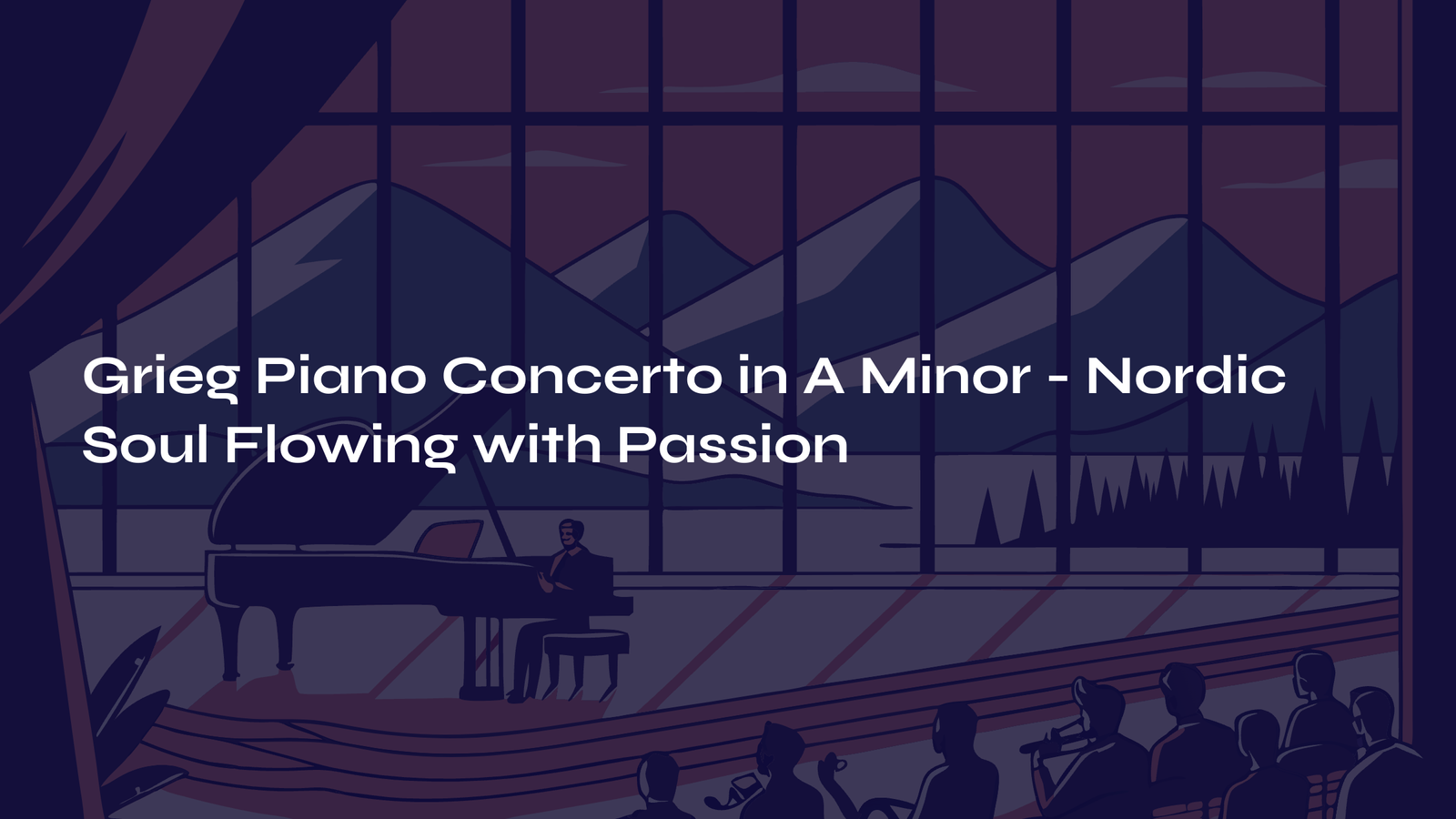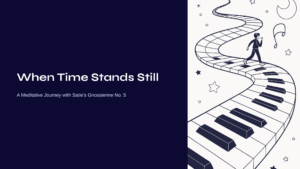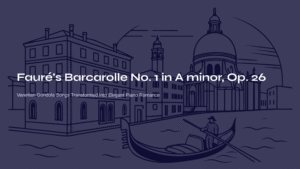Table of Contents
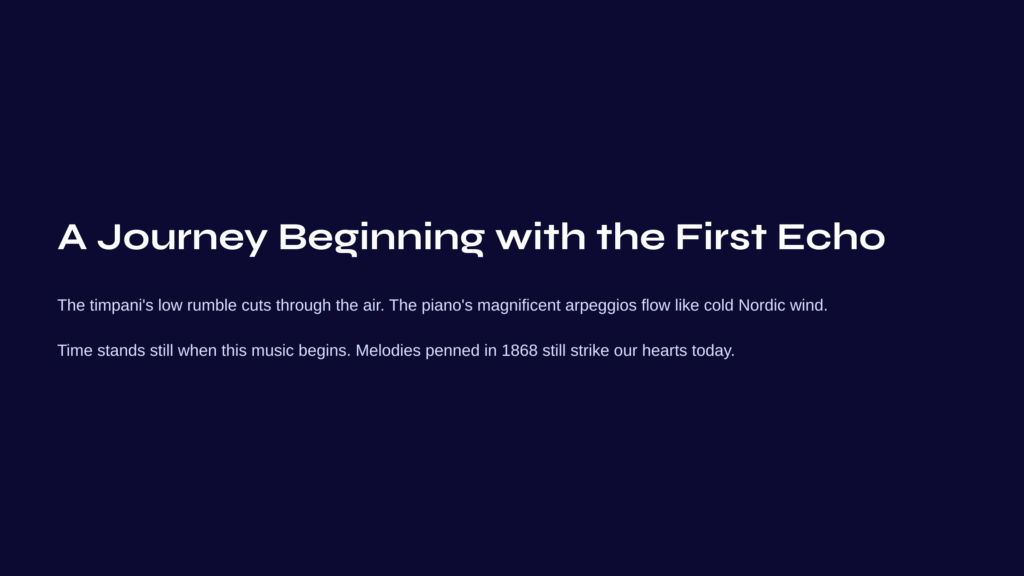
A Journey Beginning with the First Echo
I remember the moment I first heard that sound. The timpani’s low rumble cut through the air, followed by the piano’s magnificent arpeggios flowing like the cold Nordic wind. Edvard Grieg’s Piano Concerto in A Minor, first movement. In that instant, I knew this was not merely a concert piece, but a story containing the soul of an entire people.
When music begins, time stands still. The melodies that a 24-year-old composer penned on manuscript paper in a quiet Danish summer cottage in 1868 still strike our hearts more than 150 years later.
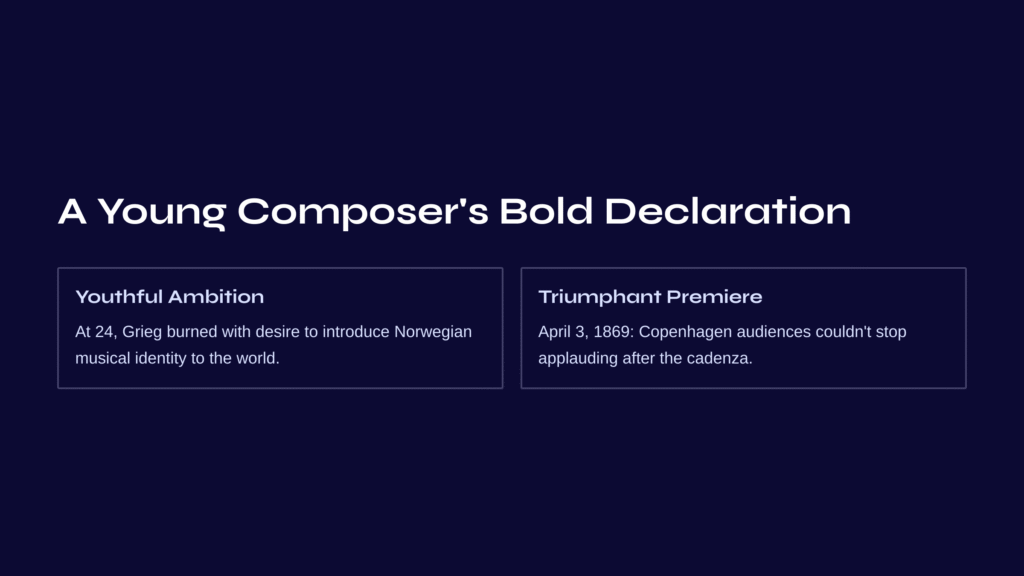
A Young Composer’s Bold Declaration
When Grieg composed this concerto, he was still a young musician unknown internationally. Yet within his heart already burned a fierce desire to introduce Norwegian musical identity to the world. Though inspired by Schumann’s A minor piano concerto, Grieg didn’t stop there. In his own musical language, he captured the unique Nordic sensibility within classical music’s formal structure.
The April 3, 1869 premiere in Copenhagen was a tremendous success. Presented with Edmund Neupert on piano and Holger Simon Paulli conducting, this work left audiences unable to stop applauding even after the cadenza. In that moment, Grieg emerged as Norway’s representative composer, and this concerto became his masterpiece.

Dramatic Opening and Lyrical Dialogue
The Thunderous Introduction
The first movement begins with a timpani roll. Like thunder rumbling through Nordic darkness, that sound dominates the entire space. Then comes the piano’s majestic arpeggio. This motif, created by a descending minor second and ascending major third, captures the essence of Norwegian folk music.
In this moment, the piano transcends being a mere solo instrument. It becomes the voice of a people, a bard telling stories passed down through generations. This dramatic, declarative theme exchanges with the orchestra in dialogue, filling the space like echoes from fjord cliffs.
The Second Theme Like Warm Sunlight
Midway through the first movement, the second theme emerges in C major, transporting us to a completely different world. This melody, crafted with dotted rhythms, flows as gently and lyrically as warm afternoon sunlight in spring. Here, the piano transforms from heroic declarer to the whispered voice of a lover.
Listening to this melody dance above the orchestra’s tender accompaniment evokes Norway’s summer white nights. Those mystical hours when the sun never sets, when everything feels dreamlike, beautiful, and fantastical.
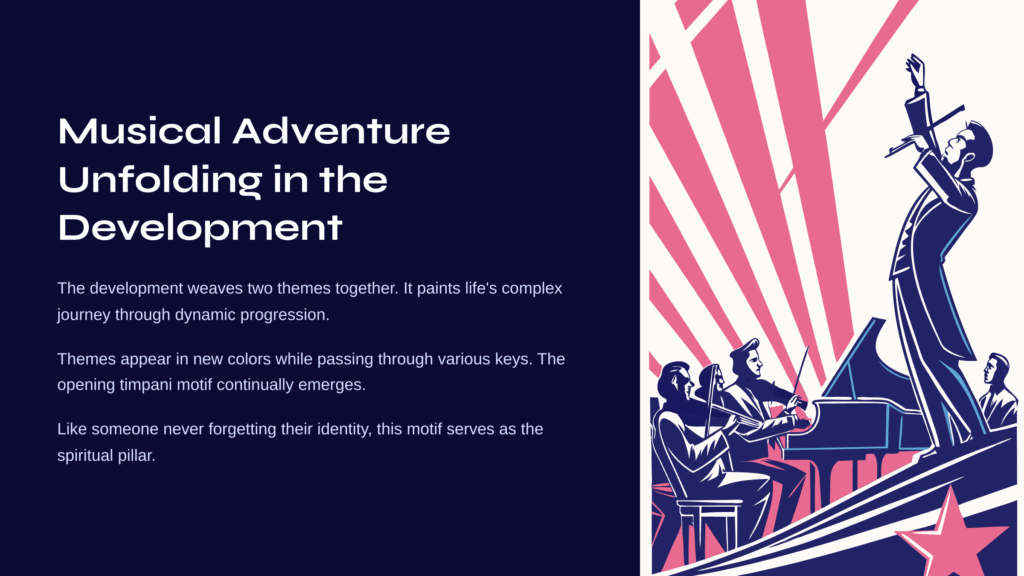
Musical Adventure Unfolding in the Development
The development section represents the work’s most dynamic portion. The two previously presented themes interweave, seemingly painting the complex journey of life itself. Grieg demonstrates remarkable compositional technique here. Rather than simply repeating themes, he clothes them in new colors while passing through various keys.
Even as virtuosic piano passages cascade, the opening timpani motif continually emerges. Like someone who never forgets their identity regardless of life’s circumstances, this motif serves as the spiritual pillar running through the entire work.
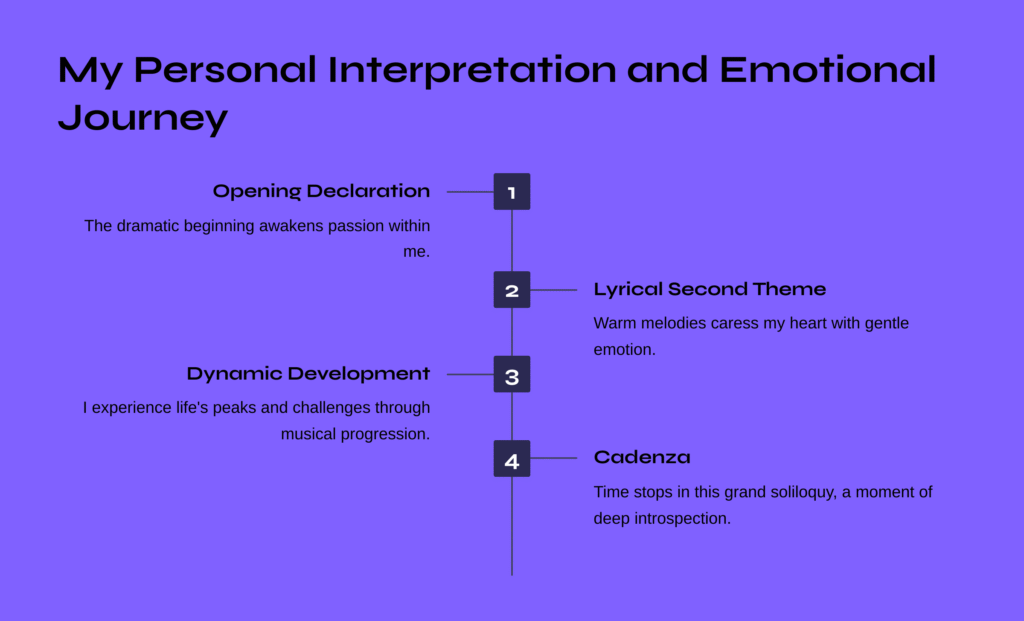
My Personal Interpretation and Emotional Journey
Each time I hear this music, complex emotions envelop me. The dramatic declaration of the opening awakens passion within me, while the second theme’s lyricism warmly caresses my heart. The development’s dynamic progression lets me experience life’s peaks and challenges, and when themes return in the recapitulation, I feel the relief of returning home after a long journey.
The cadenza section particularly feels as though time has stopped. This grand soliloquy unfolded by the pianist alone resembles a moment of introspection, reviewing all of life’s experiences. This cadenza, likely composed by Neupert, harmonizes perfectly with Grieg’s original composition, making the work shine even brighter.
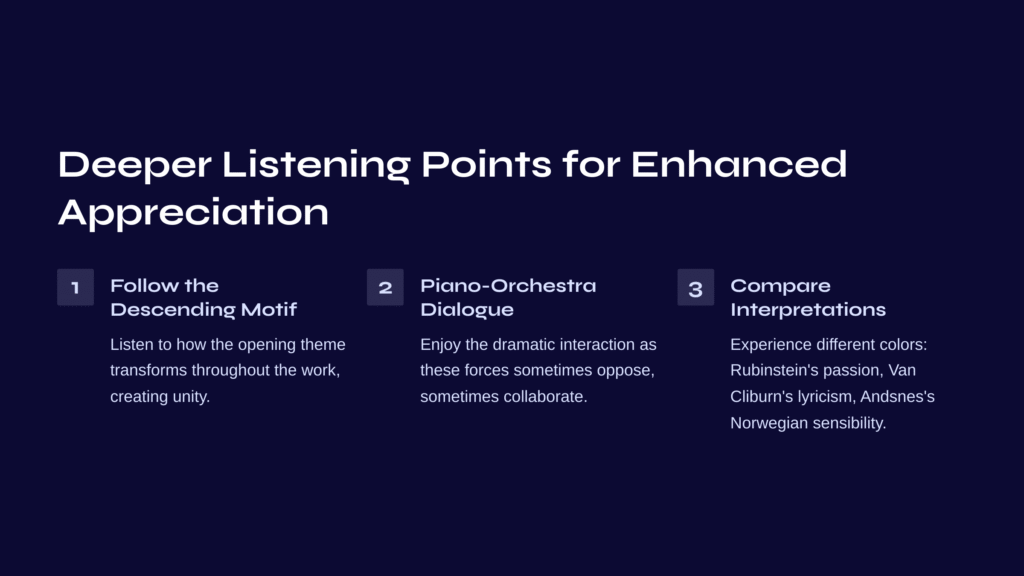
Deeper Listening Points for Enhanced Appreciation
To appreciate this work more profoundly, let’s focus on several key points. First, listen carefully to how the descending motif that first appears transforms throughout the entire work. Like a leitmotif, this theme appears in different guises throughout the piece, creating musical unity.
Second, concentrate on the dialogue between piano and orchestra. Grieg doesn’t treat the piano as the orchestra’s simple soloist. Instead, you can enjoy the dramatic interaction created when these two forces sometimes oppose and sometimes collaborate.
Finally, when listening to this work, comparing multiple versions proves rewarding. Experience different colors of Grieg painted by various pianists: Arthur Rubinstein’s passionate performance, Van Cliburn’s lyrical interpretation, or Leif Ove Andsnes’s performance imbued with Norwegian sensibility.
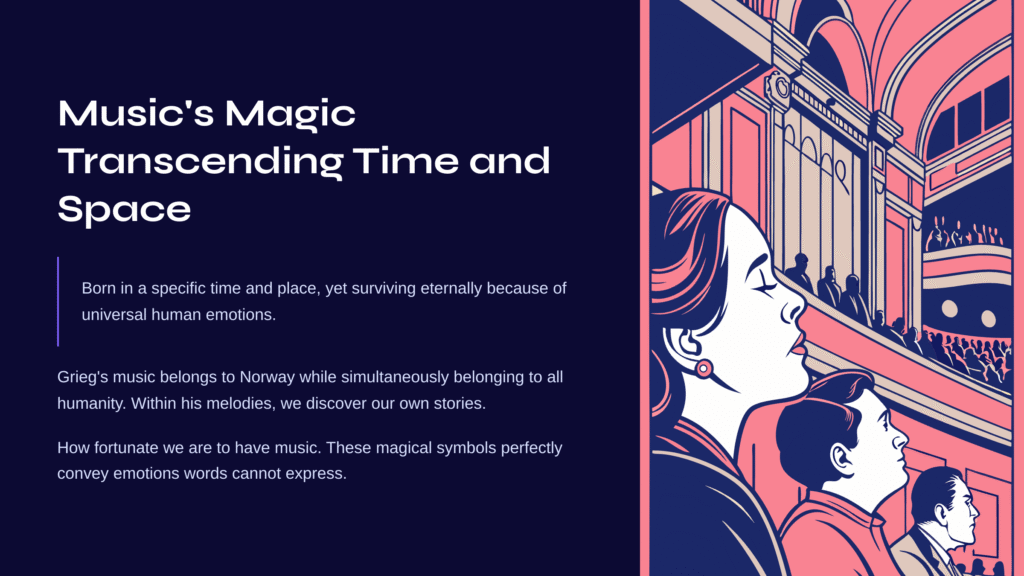
Music’s Magic Transcending Time and Space
Ultimately, the greatest gift Grieg’s piano concerto offers us is emotion transcending time and space. That music born in a Danish summer cottage 150 years ago continues moving our hearts today is truly mystical.
Listening to this concerto, I often think: isn’t this exactly what true art represents? Born in a specific time and place, yet surviving eternally because of the universal human emotions and experiences contained within. Grieg’s music belongs to Norway while simultaneously belonging to all humanity. Within his melodies, we discover our own stories and can communicate with each other through music’s language.
When leaving the concert hall, immersed in lingering echoes, this thought suddenly emerges: how fortunate we are to have music. That musical notes, these magical symbols, can perfectly convey emotions words cannot express. Grieg’s concerto is a work that once again confirms music’s power.
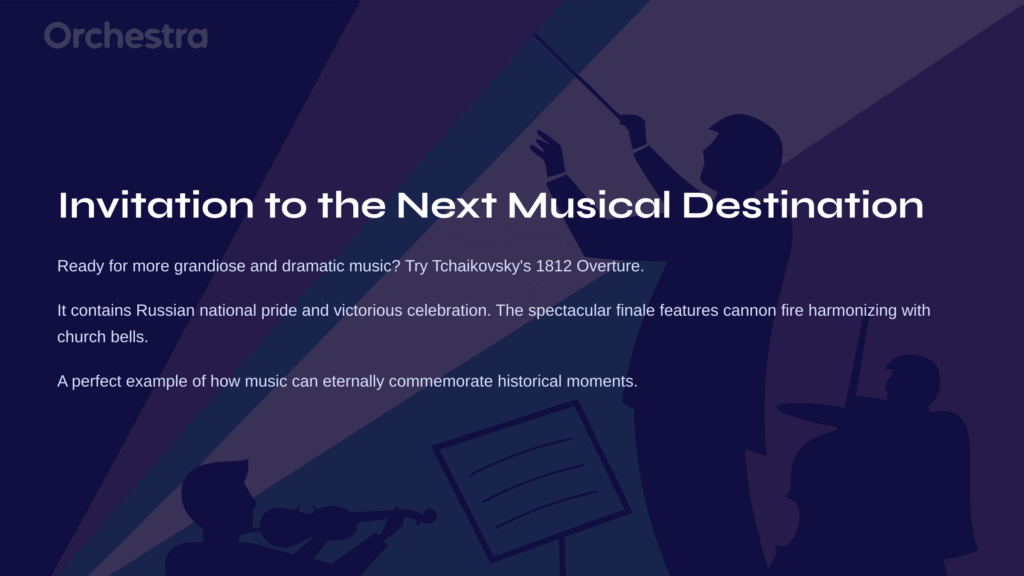
Invitation to the Next Musical Destination
If you’ve been immersed in Grieg’s lyrical and nationalistic sentiment, why not embark on a journey toward more grandiose and dramatic music? Tchaikovsky’s 1812 Overture contains Russian national pride and victorious celebration, offering nationalist music with different charms from Grieg. The spectacular finale where cannon fire harmonizes with church bells serves as a representative example of how music can eternally commemorate historical moments.
